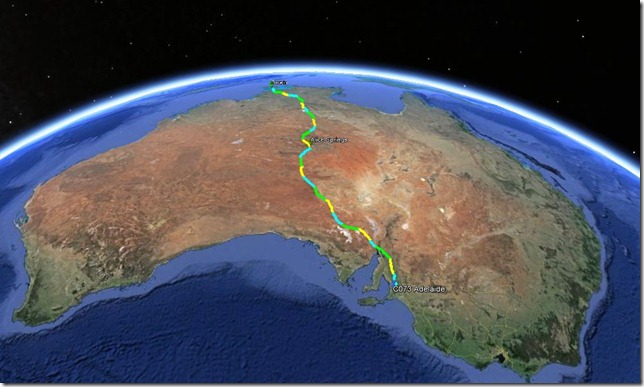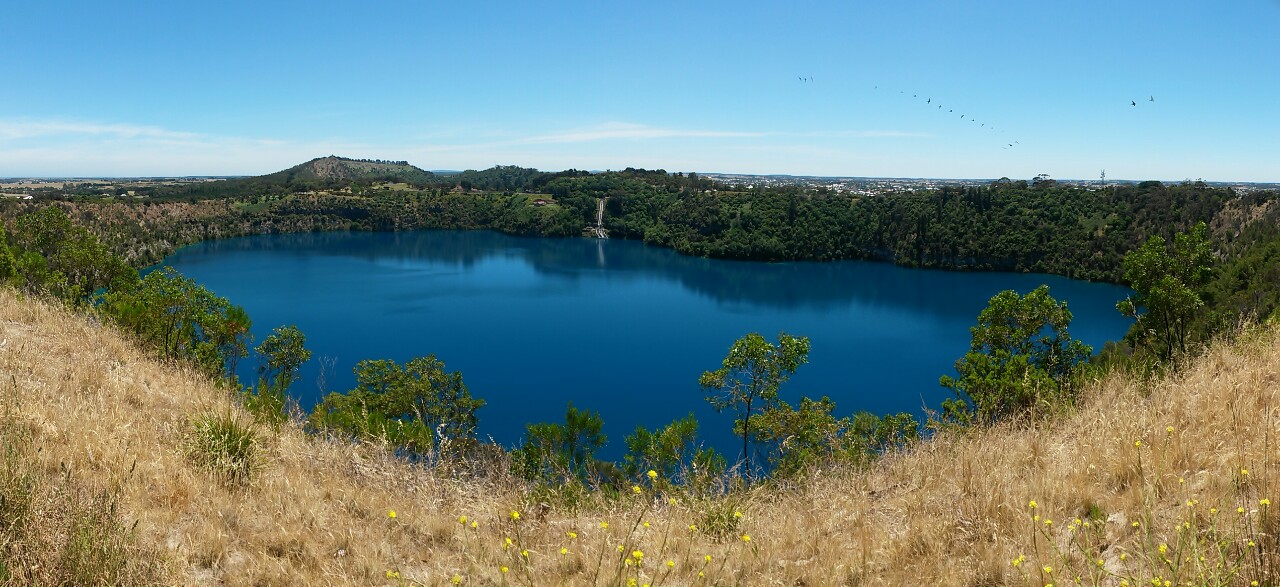We frequently have visitors to our camp grounds. Some less shy or curious about us and our fancy equipment than others.
Tweet ##transoceaniaCategory Archives: Misc
Tailwind? Negative!
Did you ever ask yourself why you always have to ride into the blowing headwind on Trans-Oceania and there is never a day without wind?
Take a closer look at the road signs and you will find the answer:
TdA runs his own Wind Farm. However, instead of ‘harvesting’ wind to generate electricity, their great Chief Wind Engineer (CWE) Cristiano W. reverse-engineered the turbines and turned them into big blowers. The proof of concept phase is now finished and the system can go into full deployment around the globe to ‘enrich’ any TdA tour.
iWind
The new iSomething application. With a little extra technical effort the CWE can now turn the blades (from any place in the world) into the perfect direction to ensure you will always face the wind, no matter in which direction you turn your bicycle.
Cristiano demonstrating the tool to Andreas, the tour director in Australia. They both seem to really enjoy this new torturing tool!
Tweet ##transoceania7 Epics Promotion Video
The 7epics promotion video, featuring Brett has been published on YouTube.
A nice introduction to the 7epics. the idea behind it, his motivation, by fellow Trans-Oceania cyclist Brett Lanham combined with an assembly of video footage and photos from the current Trans-Oceania tour, past Tour d’Afrique and other TdA epic tours.
Tweet ##transoceaniaBeach Race
Another deviation from the direct route to camp led me to the ‘Granites’, the first real beach access to the Southern Ocean, just 20km north of Kingston S.E., 3 cycling days south of Adelaide. The endless beach is used by 4x4s to drive along. I had a race with a quad …
… after having already 145km in my legs that day I happily accepted the 2nd place. ![]()
The Granites
Tweet ##transoceaniaVirtual Partners
Blue Lake – Mt. Gambier
Today I took a detour from the town Mt. Gambier to the Blue Lake, a crater lake that changes its color every year in summer and winter. A blue I’ve never seen before.
There is a 3.5 km scenic cycling route along the rim of the crater (TdA should add this alternate route to Nelson to their ‘tour bible’)
There are 2 more craters with lakes, but too much to add on to another wind battered cycling day.
Tweet ##transoceaniaSleeping like a Rock
It is breakfast time in the camp. All but 1 tent are already stored back into the duffle bags and riders enjoying a hot coffee and a delicious breakfast, ready to go back on the road. But who is the rider, enjoying an extended night of sleep in the cool Riverton camp?
Still busy with the final cleanup in the background, the guy (let’s name him Eric) is almost ready to join the breakfast party.
Note:
There is still more drill needed to get  Eric ready for his Cairo to Cape Town tour next January. Otherwise we might find him still sleeping in his tent in the Nubian Desert in Sudan, when the tour is already on its last leg to Cape Town.
Eric ready for his Cairo to Cape Town tour next January. Otherwise we might find him still sleeping in his tent in the Nubian Desert in Sudan, when the tour is already on its last leg to Cape Town.
Tip: Subscribe to the TdA water bucket alarm, if you don’t hear the sound of your own alarm clock!
Progress
In 25 cycling days we covered the distance of 3169 kilometers to travers the Australian continent from north to South. 
But it is not over yet. Twenty more challenging and exciting days wait for us to ride along the south and east coast of this vast ‘island’ to finally get us to Sydney.
73 cycling days since starting in Medan on Aug. 18th, with 8714km on the odometers for the full tour riders.
Tweet ##transoceaniaCertificate
A TdA Surprise.
Today, everyone received a certificate to document the successful traversal of the Outback via the Stuart Highway on a bicycle. Starting in Darwin in the Northern Territory all the way south to Port Augusta, a 2786km journey in 22 cycling days through the dry and hot Australian outback.
Tweet ##transoceaniaWatch for Cyclists
What a surprise. Now that the chances to see a kangaroo, emu or other wildlife are much lower than in the outback, the motorists are informed to look out for cyclists! Obviously a rare and dangerous species, too.
 I understand the meaning of the road sign above, as well as the reminder on the right, that there are kangaroos and other wildlife to expect to be on the road. However, what is a DIP?
I understand the meaning of the road sign above, as well as the reminder on the right, that there are kangaroos and other wildlife to expect to be on the road. However, what is a DIP?
Can it fly or swim? How big is it and what color does it have? Has it fur or hair? Is it endemic to Australia or can it be found in other countries, too? Has anyone seen a DIP on the ride today?
Tweet ##transoceania














